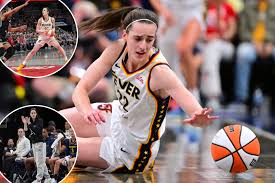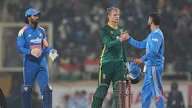Caitlin Clark opens up on mental challenges in WNBA

Here’s a comprehensive deep dive into Caitlin Clark’s candid conversation about the mental challenges she’s faced during her sophomore WNBA season, highlighting how she’s navigating unprecedented pressures and growth.
—
A Season of Firsts… and Setbacks
Coming off a historic rookie year—where she led the league in assists, notched multiple triple-doubles, and helped elevate the Indiana Fever to record-breaking viewership—Clark entered her second season under a glaring spotlight . But as the 2025 campaign unfolded, she encountered the toughest obstacle yet: her own health.
After missing 10 games—first with a quad injury in late May, then a groin issue—Clark experienced her first extended absence since high school and college . These weren’t just physical hurdles; they shook her mentally:
> “It’s been challenging mentally, just staying in it… giving myself grace as I continue to come back and get my feet under me.”
The Fever went 5–5 without her, a mixed stretch that underscored her vital impact on the team .
—
Battling Expectations: From Pressure to Purpose
Clark’s sophomore slump wasn’t just about missing time—her shooting percentages dropped from a stellar rookie 41.7%/34.4% to 38.6% from the field and 30.1% from three . After shooting just 4 for 12 in her return, she admitted it would “take me a second to get my wind back”—a reminder of the unnatural rhythm of frequent stops and starts .
Beyond stats, the mental toll of persistent injuries and performance pressure weighed on her:
> “Sometimes it’s almost harder to sit on the bench than come back into the game.”
Clark has long been an advocate for mental wellness, having promoted therapy as “normal” for student-athletes . With a packed WNBA schedule—games, media obligations, and fewer breaks—she’s had to learn gritty resilience:
> “At this level… you can’t sit and sulk about one performance… I’m a perfectionist… sometimes that can be hard.”
CNN also echoes this, noting she’s “gotten better” at moving on game to game .
—
Spotlight, Scrutiny, and Self-Care
Clark’s ascent also brought intense media attention and social commentary, especially after her strong college career and rookie fame . She’s said, openly:
> “I talk to the media more than I get to talk to my own family… it’s a lot for somebody that’s 22 years old.”
Yet she remains deliberate in her response:
> “I don’t read [social media]… My job is to compete and play basketball every single day.”
Her raw honesty—admitting that maintaining fun and focus amidst constant noise is hard—offers a powerful lesson on balancing mental wellbeing with professional demands .
—
Finding Strength in Team, Therapy, and Growth
Despite tough stretches, Clark is undaunted and hopeful. She’s used downtime to reflect, glean lessons, and see adversity as preparation:
> “When we get to the end of the year … this is a moment I can look back on and be really proud of myself for everything I went through.”
In addition to personal sessions, she leans on family, teammates, and professional support systems. Clark credits therapy and sports psychology—used since Iowa—as cornerstones of her approach .
—
The Bigger Picture: Pressure, Identity, and Industry Impact
Clark’s challenges speak to larger systemic questions: the pressure of fame, league readiness, and mental-health resources in women’s basketball. A Forbes article once noted that the WNBA wasn’t quite prepared for the “Caitlin Clark Effect” . Her candidness has sparked conversations around athlete care, identity stress, and league evolution.
There’s also broader scrutiny about how Clark’s race and visibility shape narratives in a sport deeply rooted in Black excellence . Yet through it all, she remains focused—and continues to break barriers.
—
What Lies Ahead
As the Fever aim for a playoff push—currently hovering around the 7th seed at 8‑9 —Caitlin Clark’s health and mental clarity are vital. By prioritizing balance, leaning on her team, and embracing vulnerability, she’s forging resilience that could define her future—not just as a star, but as a leader in mental wellness advocacy.
Her journey is a powerful reminder: even global superstars are still human. The way she turns struggle into strength could be her most lasting legacy of all.
—





Trying out AI Accounting Assistant tools can really simplify business finance tasks. Love how platforms like tyy.AI make it easy to find the right solutions!